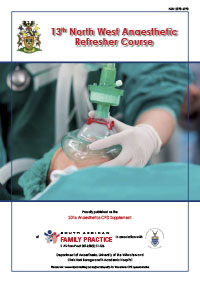COPD: What the anaesthetist should know
Keywords:
Chronic obstructive pulmonary disease, COPD, anaesthesiologist
Abstract
Chronic obstructive pulmonary disease (COPD) is a chronic, progressive, inflammatory disease affecting the airways and lung parenchyma. It is characterised by persistent airflow obstruction which may be partially reversible, and is caused by exposure of the lung to noxious particles or gases.1 Although preventable and treatable, once established, the disease course is punctuated by exacerbations. The consequences of COPD result in not just a disease of the respiratory system, but rather a systemic illness which affects multiple organs. COPD is a common disease, yet frequently unrecognised and underdiagnosed. The WHO predicts it will become the 3rd leading cause of death worldwide by 2030.2 There has been a trend away from classifying COPD patients as having either emphysema (“pink puffers”) or chronic bronchitis (“blue bloaters”). However, there is now mounting evidence that this may become clinically useful in stratifying patients with regard to prognosis and making treatment decisions. More topically, there is an enhanced appreciation that some patients with COPD manifest with features of coexistent asthma. This entity has been labelled the asthma-COPD overlap syndrome (ACOS).
Section
NWU Refresher Course
By submitting manuscripts to SAFP, authors of original articles are assigning copyright to the South African Academy of Family Physicians. Copyright of review articles are assigned to the Publisher, Medpharm Publications (Pty) Ltd, unless otherwise specified. Authors may use their own work after publication without written permission, provided they acknowledge the original source. Individuals and academic institutions may freely copy and distribute articles published in SAFP for educational and research purposes without obtaining permission.

